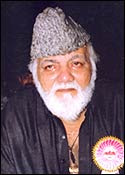Every generation needs heroes. We, however, seem to have preferred money. There is just too much of it to be made in the 21st century, never mind ‘the-worst-economic-crisis-since-the-Great-Depression’ phase that came and went.
To disengage and chase six-figure salaries instead is the defining logic of our times. So when a young person does something completely illogical, like chase the truth, it grabs our attention.
Only 22, and already with over 3,ooo Right to Information (RTI) applications to his name, Afroz Alam Sahil is dynamite when it comes to blowing the lid off things. An aspiring documentary film maker, Sahil is a final year student at Jamia Milia Islamia’s Mass Communication Research Centre (MCRC). He moved to New Delhi in 2005 (incidentally, the year the RTI Act was passed) from Bettiah, a city in West Champaran district of Bihar, to do his bachelors in mass media.
His latest volley comes from an ongoing 18-month-long-already struggle to retrieve facts on the controversial Batla House encounter.
A copy of the post-mortem report of Atif Ameen and Mohammad Sajid, both killed in an operation conducted by the Delhi Police on 19 September 2008, was finally given to him by the National Human Rights Commission (NHRC), in response to his RTI application. It is the most damning evidence yet against Delhi Police’s claim that the encounter wasn’t fake.
In less than a week of the Batla House encounter, Afroz had filed four RTIs addressed to the Delhi Police, the All India Institute of Medical Sciences (AIIMS), the NHRC, and the Supreme Court. Some of the details he sought were: number of people killed in the encounter, a copy of the FIR lodged (if at all) by the Delhi Police, copy of the post-mortem report of the two boys killed in the encounter, details on the Delhi blasts investigation, statistics on encounter killings and on terror-related cases pending in courts.
Sahil would go on to face a one-and-a-half-year long dogged resistance by the criminal justice system to deny him information. His experience with each agency could serve as a case study on how the RTI law can be subverted.
Even the Supreme Court (SC) was no exception. “The SC’s response to my RTI on terrorism-related cases was a referral to their website. It is not possible for anyone to get information on the website unless the case number is available.” Afroz, of course, persisted. When he met an SC administrative official to follow up on the RTI, his first question to Afroz was, “
Tum student
ho ya berozgaar (Are you a student or unemployed)?”
“When I replied that I was a student at Jamia, he said, ‘
Achcha Jamia.
Tabhi toh aap aise sawaal karte ho. Tum logon ki mentality aisi hi hoti hai’ (Oh Jamia. That’s why you are asking such questions. This is all that you people can think of).”
The humiliation continued.
.... .... ....
To expose the truth with the solid aid of facts is to pose an existential threat to the powers that be. Sahil is fighting an incredibly brave and dangerous game. He is not unaware of the extents to which power will stoop to silence people like him. So far, he says, he hasn’t experienced such threats. “I have faith in the law. I am not doing anything wrong,” he says.
To read the full article click here and here(Afroz's Blog)
I will continue my fight to bring about positive changes in the life of the common man.
"Ever since I have got the reply, I am getting congratulatory calls from various students of the college. The teachers have also appreciated the move and encouraging more and more students to come forward and fight for their rights rather than crying discrimination."
"I just wanted to set an example for all the students of our college and people from our community. I want that Muslims should participate and take leading role in every field. I hope my initiative will bring some hope for them," said Alam.
An RTI activist, with more than 1000 RTIs to his credit that occupies most of the space in his choc-a-bloc room, Alam has also taught the nuances and importance of RTI to the people in his native town of Bettiah in Bihar.
Buoyed by his success in the highly controversial Batla House encounter case, Alam has resolved to take his battle to a bigger field. "I will continue my fight to bring about positive changes in the life of the common man."
From Amit Singh and Shashank Shekhar's report in Mid Day
To read the full report click here


































